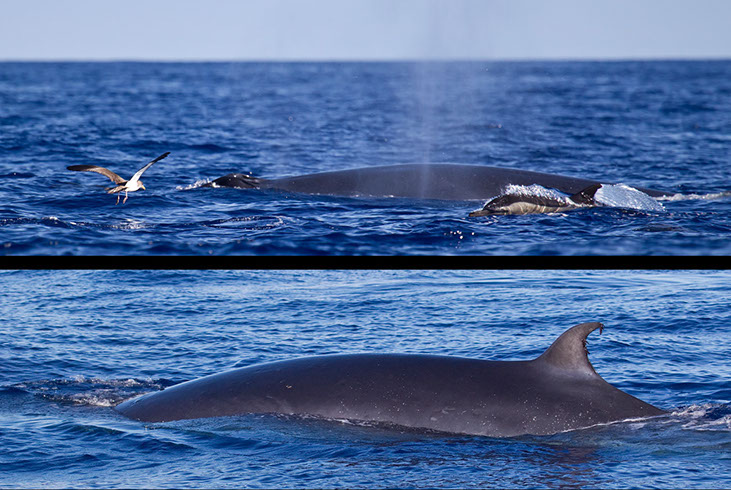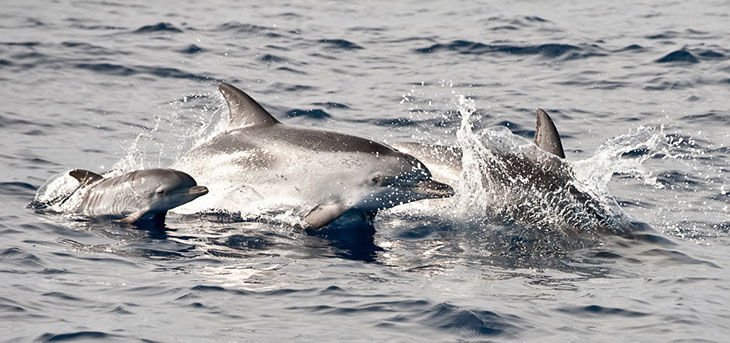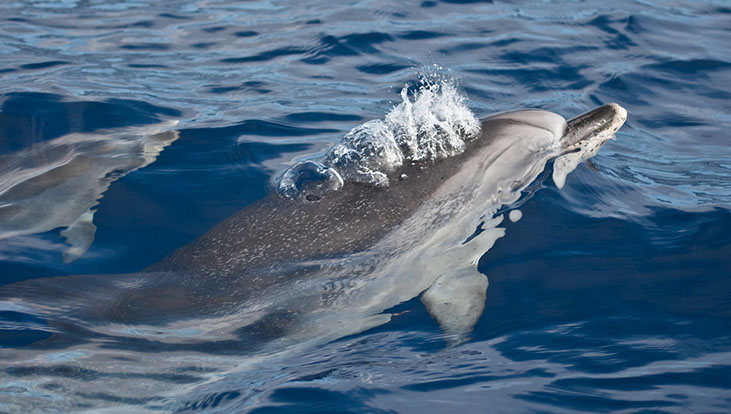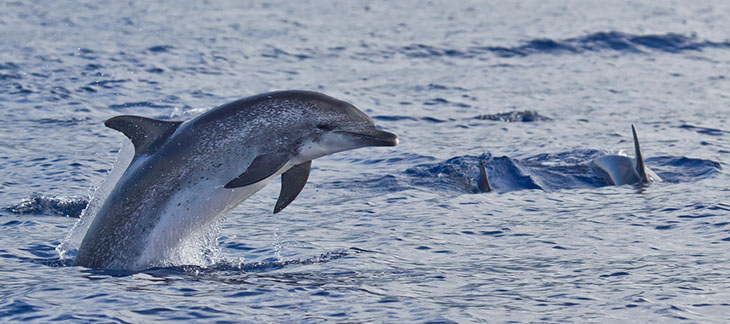Whales, Wildlife & Wilderness Pam & Wayne Osborn
The Azores - Other Life


Bryde's Whale - A Rare Visitor
We were told Bryde's whales (Balaenoptera brydei) are rarely seen in the Azores so it was a great delight to find this one. The whale was surface feeding on schooling fish. The whale moved erratically following the schooling fish and made it difficult to photograph it in the water.
The brown clumps hanging from the dorsal fins are actually crabs that live on the dorsal trailing edge. It must be a wild ride.
Bryde's whales grow to 12-15 metres.



Speedy Sei Whales
Known as the greyhounds of the sea, Sei whales (Balaenoptra borealis) can swim at up to 27 knots. The third largest of the whales, they grow to 20 metres and 28 tonnes and consume around 900 kg of food daily.
Sei whales are migrants from polar to temperate regions. This was one of two whales powering along the southern coast of Pico. I tried several time to photograph them under water but they were far too fast and I was rewarded with only brief glimpses.


Short-finned Pilot Whales
Schools of short-finned pilot whales (Globicephala macrorhynchus) are common but are shy and notoriously hard to approach. They are unmistakable with their rounded or melon heads. Males grow to 5.5 metres.
The males are very protective and when I dived with them, the dominant male was always positioned between me and the pod. The left image shows a male in the foreground with a female and calf in the background.


The Joy of Being Dolphins
A mother and calf Atlantic spotted dolphin (Stenella frontalis) surge through the water. The calf's movements looked comical and clumsy as it had yet to attain the grace and poise of its mother.



Acrobats of the Sea
There is never any boredom when dolphins are around. Their athletic acrobatics are a delight to witness.
